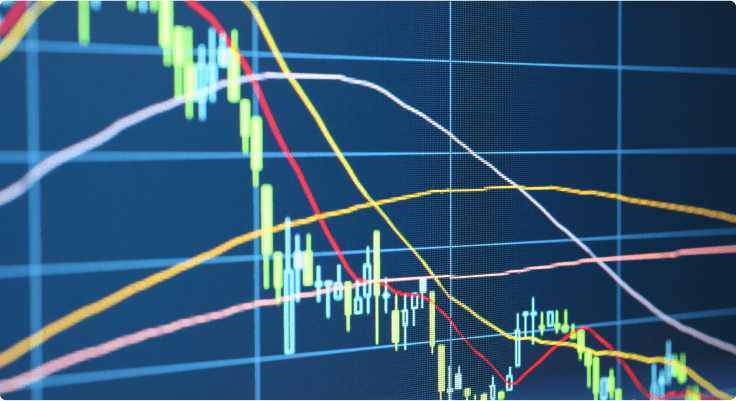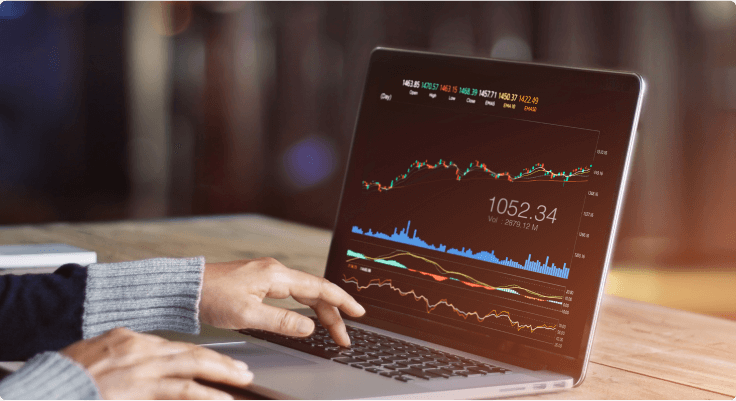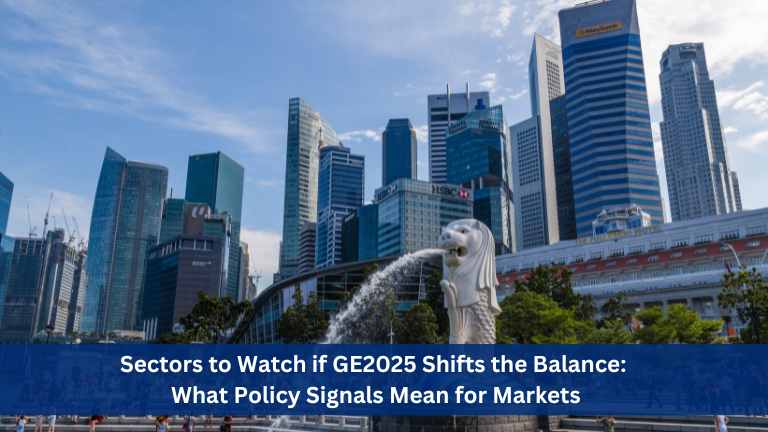There are a number of different ways to invest in shares. The most well-known and direct method is share trading – colloquially known as stock trading – by investing in the shares of companies that are listed on a stock exchange.
Another well-known investment method is CFD trading. Trading CFDs, or contracts for difference, entails trading the price movements in an underlying asset – like shares – without owning the asset.
What is the difference? Both methods allow access to trading in shares but with very different mechanics, and are in turn suitable for different traders with different needs.
Here are some of the key differences.
Differences between Share trading and CFD trading
| Share Trading | CFD Trading | |
| Market Access | Shares, ETFs | Shares, FX, Commodities, Cryptocurrency, Indices |
| Trading Hours | Exchange opening hours | 24hrs |
| Ownership | Full ownership, voting rights | No ownership |
| Dividends | Yes | Yes |
| Finance | Cash | Leverage |
| Risk | Losses limited to initial capital | Losses can exceed initial deposits |
| Hedging | No | Yes |
| Investment Horizon | Better for long term | Better for short term |
Market Access
Share trading offers access to stock exchange listed products like shares and ETFs. CFD trading offers access to a greater variety of investment instruments, like shares, FX, commodities, cryptocurrency and indices.
What investment instruments and assets are you looking to invest in? If you are comfortable with shares and ETFs, you can continue with share trading. If you would like to trade other investment assets besides shares, CFDs might be a better option for you.
Trading Hours
Share trading is only available during the exchange opening hours. In a similar fashion, share CFD trading is only available when the underlying exchange is open.
On the other hand, other CFDs like Index CFDs are available for trading round the clock along with its underlying futures contracts.
If you wish to trade shares, both share trading and CFD trading on shares offers access during the same trading hours. If you are looking for round the clock trading opportunities, then you might want to look at other CFD trading options.
Ownership
When you buy shares in a listed company, you have a stake in the company. With CFD trading, you do not own the underlying asset. This also means that in share trading, you would have shareholder privileges including voting rights. With CFD trading you would not have such privileges.
Which is right for you? That depends on what you are looking for.
Are you interested to own a part of the company and help steer its business direction? Then you would opt for share trading. Are you more interested in trading the short term price volatility you see happening with the company now? Then CFD trading is better for you.
Dividends
If a company distributes dividends, you will be entitled to receive them whether you choose share trading or CFD trading, albeit with some differences. With share trading, you will receive your dividend payout a few days to a week after the ex-dividend date. With CFD trading, you will receive your dividend payout exactly on the ex-dividend date.
Financing
With share trading, investors have to pay the full value of the shares upfront. On the other hand, CFD trading involves leverage, which means investors only need to put up a small margin to open much larger positions.
This also translates to a different level of risk involved. For share trading, your losses are limited to your initial capital. With CFD trading, your losses can exceed your initial capital.
If you prefer to pay for your entire trade position in full, you might prefer to do share trading. What if you have the same amount of capital but prefer to spread it out over a few trades without reducing your exposure? Then the ability to use leverage in CFD trading would be to your advantage.
Hedging
If you intend to hedge your portfolio, CFD trading would be preferable over share trading. Shares can only be traded with long positions, while CFD trading can trade in both directions, with long and short positions, and can be used as a hedge in bull and bear markets.
Long term or short term investing?
CFD trading and share trading can be used for both long term and short term investment strategies.
However, share trading tends to be better suited for long term investment strategies, while CFD trading lends itself to be more effective for short term investment strategies.
Why? CFD trades incur overnight funding charges, while share trades do not. On top of that, CFD trades are cash settled immediately while share trades have a settlement period of 1 to 2 working days before you get access to your capital. So if you wish to make several trades consecutively, CFD trading would provide you quicker access to your capital.
Trade CFD safely
Decided to try CFD trading? Then you need to start with a free demo account.
Phillip Futures offers Share CFD Trading on the multi-asset trading platform Phillip MetaTrader 5 (MT5). The Phillip MT5 trading platform by MetaQuotes Software, provides access to trade a variety of different asset classes on one platform.
It is integrated with a comprehensive range of technical charting tools, including the popular Trading Central indicators, as well as the Autochartist pattern recognition tool.
Right now, Phillip Futures is currently offering a zero commission promotion for MT5 customers who wish to trade SGX and US Share CFDs. There will also be no platform fees or minimum fees payable, and investors can start trading from as low as one share CFD.
To start trading, you can download the free MT5 demo account here, and open your Phillip Futures account here.
Trade Stocks, ETFs, Forex & Futures on Phillip Nova
Features of trading on Phillip Nova
- Gain Access to Over 20 Global Exchanges
Capture opportunities from over 200 global futures from over 20 global exchanges
- Trade Opportunities in Global Stocks
Over 11,000 Stocks and ETFs across Singapore, China, Hong Kong, Malaysia and US markets.
- Over 90 Technical Indicators
View live charts and trade with ease with over 90 technical indicators available in the Phillip Nova platform
- Trade Multiple Assets on Phillip Nova
You can trade Stocks, ETFs, Forex and Futures on a single ledger with Phillip Nova












